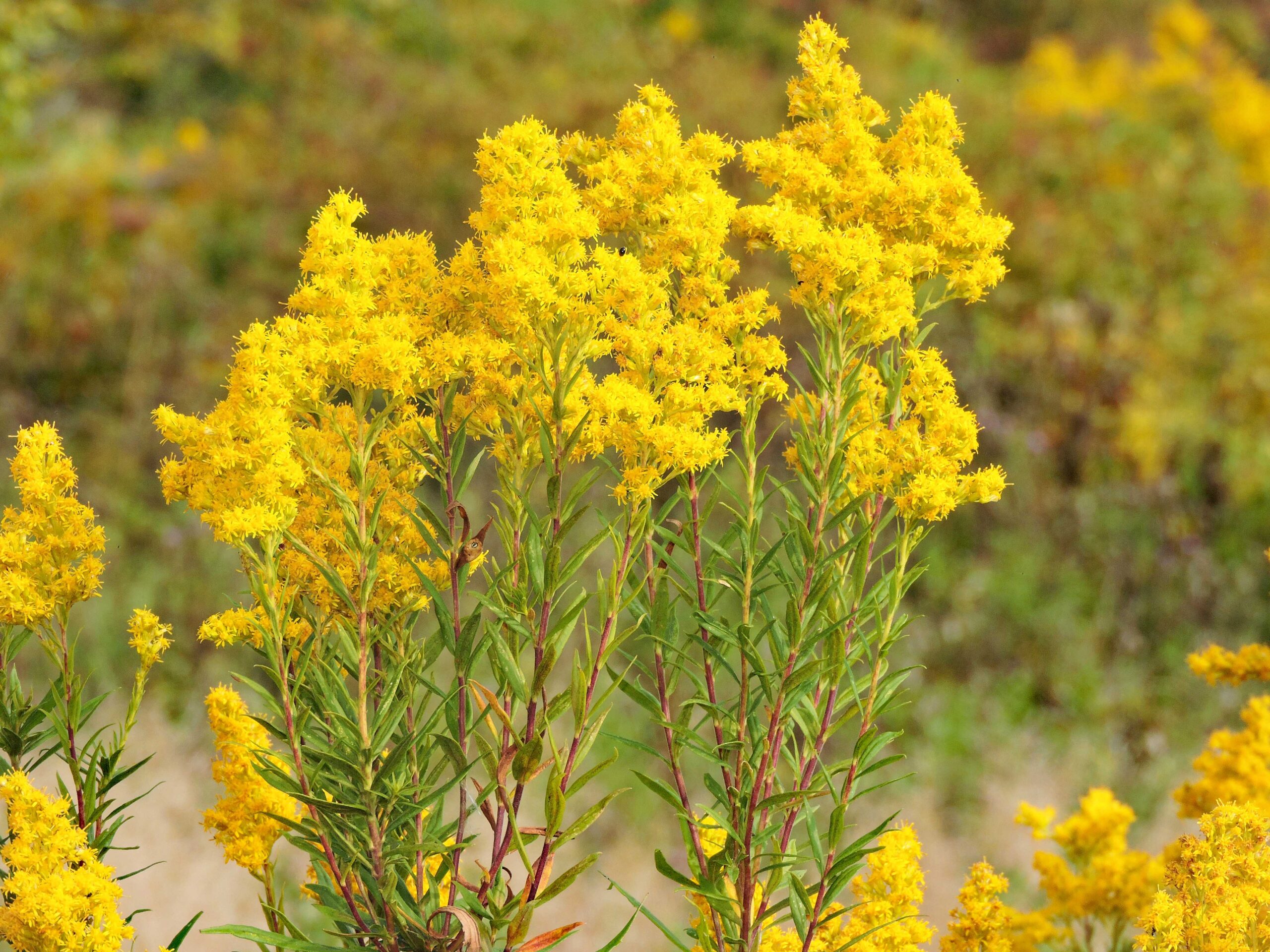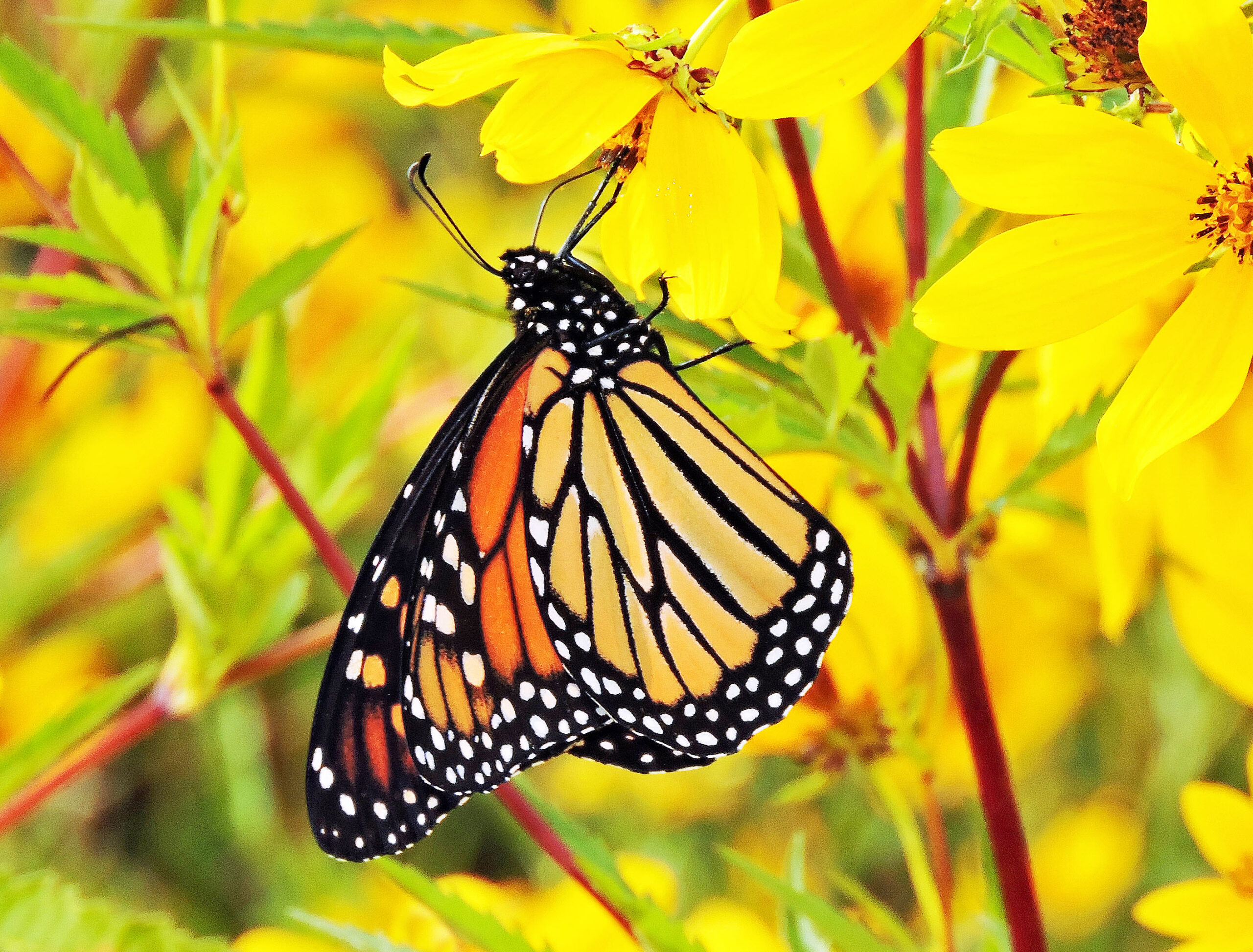
AH-CHOO! As if on cue, the sound of sneezing and sniffling fills the air as late summer ushers in the arrival of hay fever season. This uncomfortable affliction which can also include coughing and watery, itchy eyes, is triggered by a seasonal type of allergens in the air, namely pollens, causing the immune system to overreact. Not everyone is subject to the misery, but those who are are certainly ready and willing to pin the blame on whatever they can.
It just so happens that the arrival of hay fever coincides with the blooming of goldenrod. It’s hard to ignore the fields of vibrant gold blossoms waving in the breeze, creating a gorgeous, glowing spectacle along country roads.
A member of the genus Solidago, goldenrod boasts over 100 different species native to North America, 22 of which can be found in Ohio alone. Goldenrod prefers soil that is not overly nutrient-rich, yet well-drained allowing it to take root in places where other plants might struggle. Pastures, abandoned fields, roadsides and ditches are all areas where goldenrod thrives.

Goldenrod begins to bloom in midsummer (depending upon the species) and continues throughout autumn. Individual plants bloom at different times, displaying masses of yellow flowers.
If you look closely at a blossom, you will see that it is made up of numerous smaller flowers. Each one of these contains a supply of nectar and pollen, setting the table for an enormous variety of important pollinators including bees, wasps, butterflies, moths, beetles and flies. Goldenrod continues to bloom and produce nectar long after other flower species have withered and died.
Goldenrod beneficiary

If there is one insect that benefits from goldenrod, it’s the monarch butterfly. The month of May typically marks the arrival of the first monarchs to this area. Throughout the summer, there are several generations that occur. Monarchs mate, lay eggs on milkweed and pass away in just a few weeks. These eggs hatch and mature into another generation of monarchs which do the same.
Throughout the summer, the number of monarchs increase. As autumn nears, daylight hours decrease and nighttime temperatures begin to drop. This combination of environmental triggers illicit chemical reactions in the final generation of monarchs. Instead of becoming yet another breeding generation, their reproductive organs remain dormant. This will become the migratory generation.
Right now, monarch butterflies are in the process of winging their way south to a few overwintering sites in the mountains of Mexico. It is an arduous journey for such a tiny insect to fly thousands of miles to a destination that it has never visited.
Once it arrives, it will mingle with millions of other monarchs that have made the same trek. The butterflies will pack together for warmth on the fir trees until spring when they will become active as the temperatures begin to warm. Their reproductive organs will kick into gear and they will begin to mate and disperse northward. This migratory generation of monarchs can live up to a whopping 9 months.
As monarchs migrate, they are fueled by nectar. Early autumn provides a host of different flowers from which they obtain nourishment. Yet as the season progresses and the flowers become spent, it is the goldenrod that persists and gives them the lifesaving nutrition that is so crucial for survival.
There is nothing more striking than this vivid orange and black insect as it prods each tiny golden bloom for nectar with its long proboscis. With the continued downward spiral in their overall population, monarch butterflies are lucky to have a friend in this beautiful plant!
Unknowingly, the wide variety of insects drawn to goldenrod carry the pollen on their bodies from one plant to the next, aiding in fertilization. You see, goldenrod pollen is heavy and sticky. Each pollen grain carries a weight too heavy to be lofted into the air by the autumn breezes. Thus, the plant depends solely on its insect pollinators to propagate its species.
True culprit

The fact that goldenrod pollen is not blowing around on the breezes and is not the culprit for hay fever may be an eye-opener for some. The culprit is a much more inconspicuous plant that can grow in association with goldenrod as well as many other places and blooms at the very same time.
Ragweed is a flowering plant that gets its name from the ragged appearance of the plants’ leaves. Most common in the Midwest and east, it is found in every state. Two species of ragweed are the most familiar: common ragweed, Ambrosia artemisiifolia, and the taller, giant ragweed, A. trifida.
Ragweed flowers, produced on a spike, are dull green and go largely unnoticed. The pollen produced by these flowers is extremely light and is easily carried by the wind.
In fact, scientists have found ragweed pollen as high as 2 miles up in the atmosphere and over 400 miles out to sea. If that’s not efficient enough, each plant can produce 1 BILLION grains of pollen. To make matters worse, ragweed is a very competitive weed and can produce yield losses in agricultural crops.
You may not realize it, but ragweed is most likely growing right under your nose. Take a walk around your property right now and look for the unassuming spikes of flowers towering above the ragged-looking leaves. And then, look to the goldenrod, offering up its riches for an overwhelming number of wildlife species that have become so dependent upon its treasure.
















